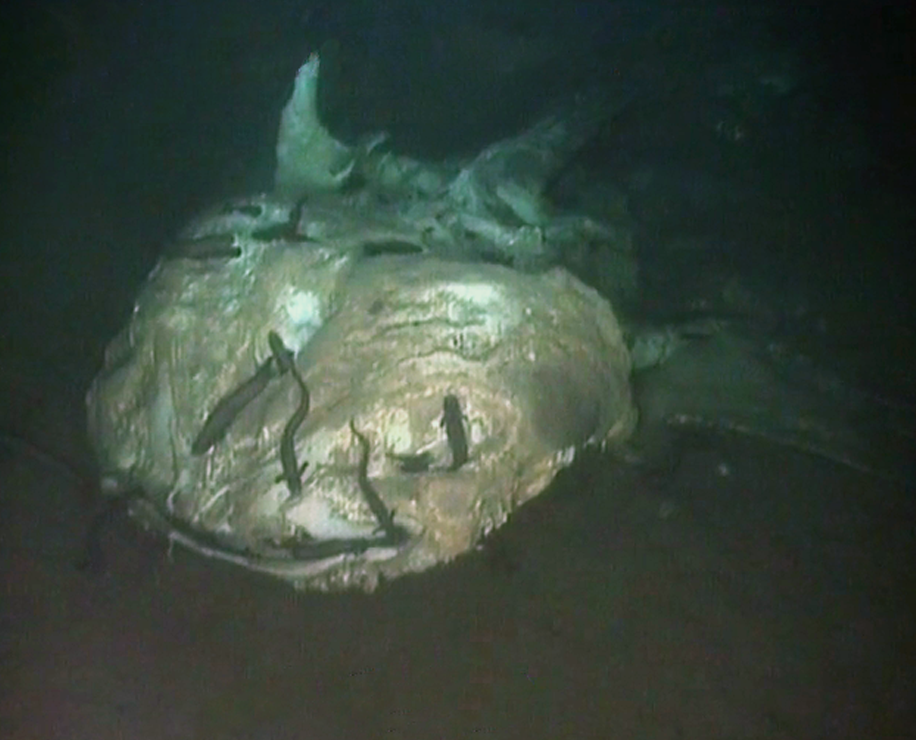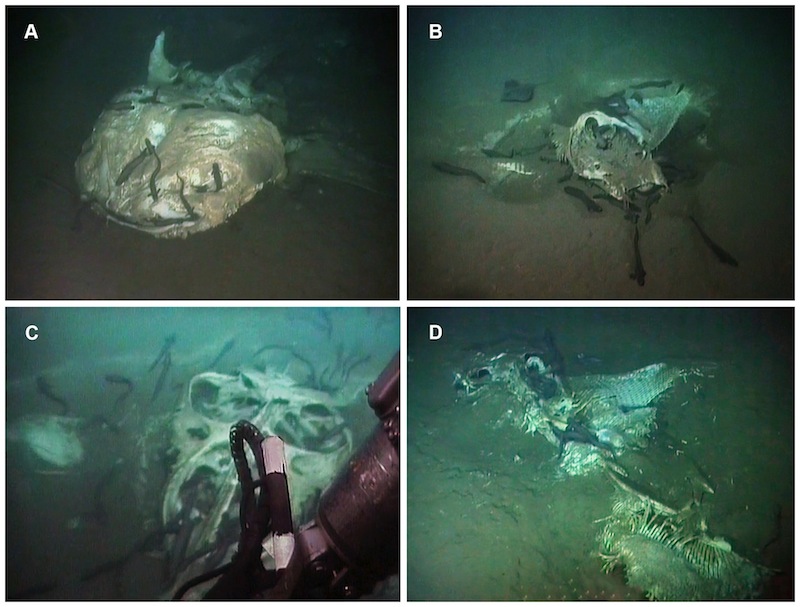4 Rare Undersea Boneyards Discovered

In a chance discovery, scientists found the first images of a dead whale shark and three dead rays on the bottom of the Atlantic Ocean.
Marine creatures naturally fall to the seafloor when they die, and their bodies can provide an important source of nutrients for bottom-dwellers, such as crabs. However, the sunken carcasses of even large animals like whales are rarely observed. Only nine vertebrate carcasses (or carcasses from animals with a backbone) have been documented over the course of five decades of deep-sea photography.
The new footage of the whale shark and three individual rays was inadvertently captured off the coast of Angola in West Africa by a camera-equipped remotely operated vehicle (ROV) conducting underwater surveys for the oil industry between 2008 and 2010, a group of scientists said. [Winning Photos: See Amazing Undersea Images]

At nearly three-quarters of a mile (1,210 meters) below the surface, all that was left of the whale shark (Rhincodon typus) was its fleshy head, pectoral fins and part of its spine, the scientists reported online May 7 in the journal PLOS ONE. The three rays, which likely belonged to the genus Mobula, were similarly reduced to their skeletons and little flesh. Scavengers — mostly eel-like fish known as zoarcids — were spotted feeding and roosting on the carcasses.
Previous studies have shown that so-called "whale falls" host complex ecosystems and support a diverse array of life from sharks and eels to bone-eating zombie worms and bacteria. Rare footage of these boneyards has even led to the discovery of new species, such as sea snails, worms, sea anemones and tiny crustaceans.
But the four new "fish falls" off the coast of Angola were not teeming with as much life as is typically found around a whale fall, the scientists said. Compared with marine mammals, elasmobranchs (a family that includes sharks, rays and skates) decompose more quickly and aren't as nutrient-rich.
"Their flesh is primarily muscular and lacks the fatty blubber layer carried by whales," wrote the researchers, led by Nicholas Higgs of Plymouth University in the United Kingdom. Whale bones can survive on the seafloor for decades, but fish skeletons lack the minerals and lipid-rich bone marrow that marine mammals have, which may cause them to degrade in a matter of weeks or months, the scientists said.
Sign up for the Live Science daily newsletter now
Get the world’s most fascinating discoveries delivered straight to your inbox.
The authors of the study speculate that fish falls are primarily important sources of food for scavengers. But the fact that the four carcasses in this study were found within a relatively small area of about 0.5 square miles (1.48 square km) suggests dead whale sharks and rays might be quite common seafloor sights.
Follow Megan Gannon on Twitter and Google+. Follow us @livescience, Facebook & Google+. Original article on Live Science.










